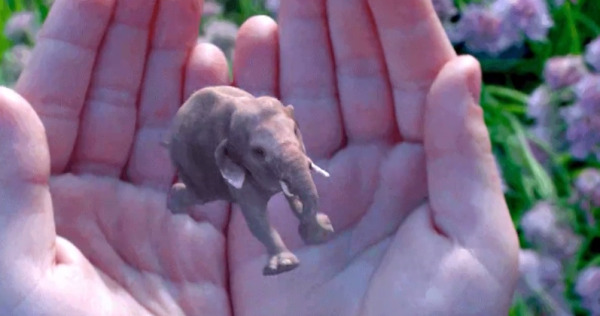Magic Leap adds Neal Stephenson as VR "chief futurist"
If you thought Google-invested startup of augmented reality mystery Magic Leap couldn't get any more intriguing, think again: famed science-fiction author Neal Stephenson is now onboard. The writer – perhaps best known for his novel Snow Crash, which included plenty of augmented and virtual reality technology – will be Magic Leap's Chief Futurist, it was announced today, joining the hype-causing team experimenting with ways to project light fields onto the retina and use them to deliver believable three-dimensional environments. Turns out, Magic Leap's demonstration was enough to convince the award-winning author that the technology has some serious potential.
Published back in 1992, Snow Crash was Stephenson's third novel, set in the near-future – or what the author believed was nearly possible given the technological landscape at the time – and making heavy thematic use of the so-called Metaverse.
This, a successor to the internet, was a virtual environment in which users were each represented as digital avatars. While public access terminals offering simple black and white access were available in the novel's universe, the most common method of access were personal display goggles, though which a first-person view of the Metaverse would be delivered.
At the time, Stephenson says, he believed that sort of personal virtual reality environment would be just around the corner. Instead, it's taken considerably longer to get anywhere close, and the nearest to mass-market wearable display approaches have either focused on delivering basic notifications, like Google Glass, or some sort of game arena, like Oculus Rift.

Magic Leap surged from near-unknown status back in October, after it was revealed that Google – among others – had made an investment totaling more than half a billion dollars.
The technology that's paying for is far from detailed at this stage, though Stephenson describes it as "a synthesized light field that falls upon the retina in the same way as light reflected from real objects in your environment."
What the author is clear on, however, is that tech alone won't be enough to make Magic Leap a success. Instead, he writes, it will demand a whole new world of entertainment like games, specially written to take advantage of the virtual reality potential.
"I sometimes feel that the creative minds who make games have done about as much as is possible in two dimensions. It's hard to imagine how the current crop of games, for example, could be more finely tuned to deliver that particular kind of entertainment. It feels like the right time to give those people a new medium: one in which three-dimensionality is a reality and not just an illusion laboriously cooked up by your brain, and in which it's possible to get up off the couch and move–not only around your living room, but wherever on the face of the earth the story might take you. Making such games is not going to be a matter of porting existing ones to the new system. It's going to mean redefining the medium from the ground up" Neal Stephenson, Chief Futurist, Magic Leap
As a result, rather than being a somewhat nebulous role as celebrity cheerleader, Stephenson's job with the company will be to explore just what practical applications might be possible.
Being able to intimately explore a digital environment that's as realistic as the real-world around us is the grail of many science fiction authors, and so it's perhaps no surprise that someone like Stephenson is now involved.
What'll arguably be more interesting is how Magic Leap manages to take its light field theories and core technologies, and translate them to a commercial product that can not only be affordable enough to gain traction, but convince content developers to get onboard too.
VIA Wired
SOURCE Magic Leap
IMAGE Jean Baptiste Paris
